13 Best Air Purifiers: No more particulates or VOCs of 2024 - Reviewed
We spend most of our time indoors, and the air quality in our homes and offices can be surprisingly poor. Smoke, allergy-causing pollen and dust mites, viruses and bacteria, and common household chemicals all add to indoor air pollution. The best air purifiers improve indoor air quality by removing these pollutants.
After extensive testing, the Blueair Blue Pure 311i (available at BlueAir) is the overall best air purifier, combining multiple filters to remove particles and chemicals. For a value-packed HEPA purifier, the Winix 5500-2 (available at Amazon) is a top performer with low operating costs.
However, if you need an air purifier for a specific use case, keep reading—we've tested all these just for you.
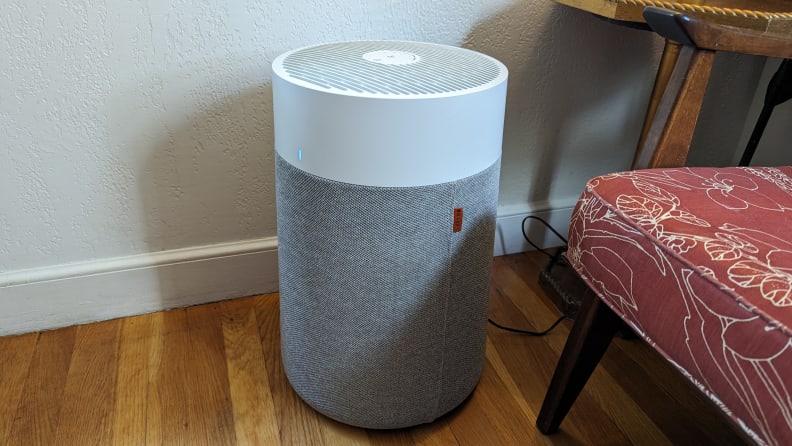
Credit: Reviewed / Dave Ellerby

The Blue Pure 311i's prefilter is easy to remove and wash.
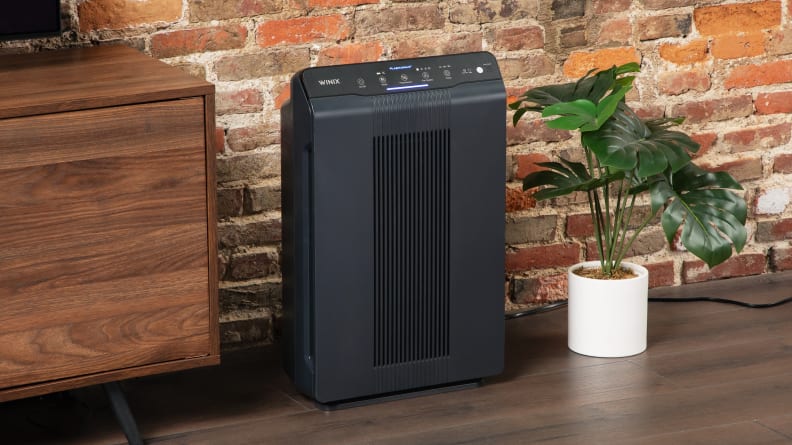
Credit: Reviewed / Timothy Renzi

The Winix is a value pick with a few elite features, like an air quality monitor and strong VOC filtering.
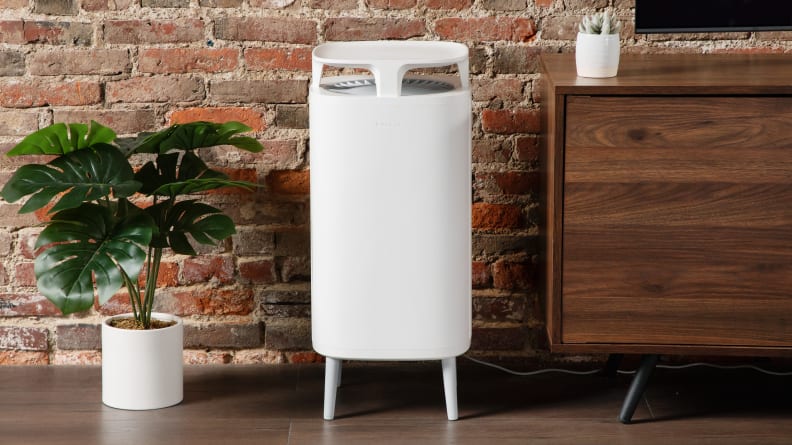
Credit: Reviewed / Timothy Renzi

Doubling as an attractive side table, the Blueair DustMagnet 5410i has powerful smart features that will help you get the most out of it.
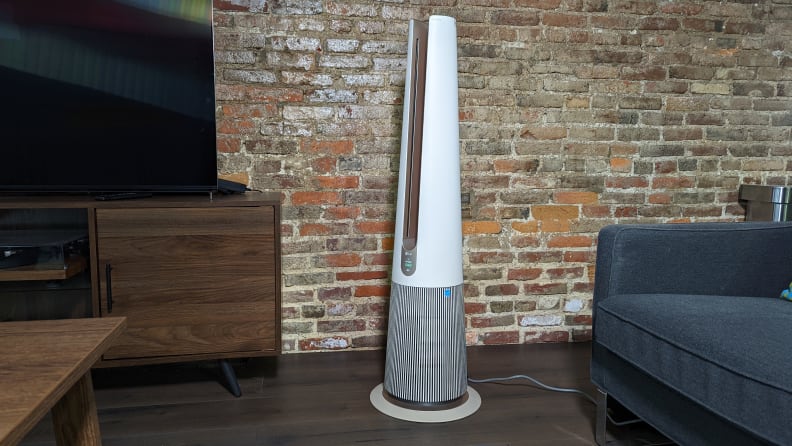
Credit: Reviewed / David Ellerby
The LG PuriCare AeroTower's unique shape, tall stature, and overall weight can make it a hassle to move from room to room.
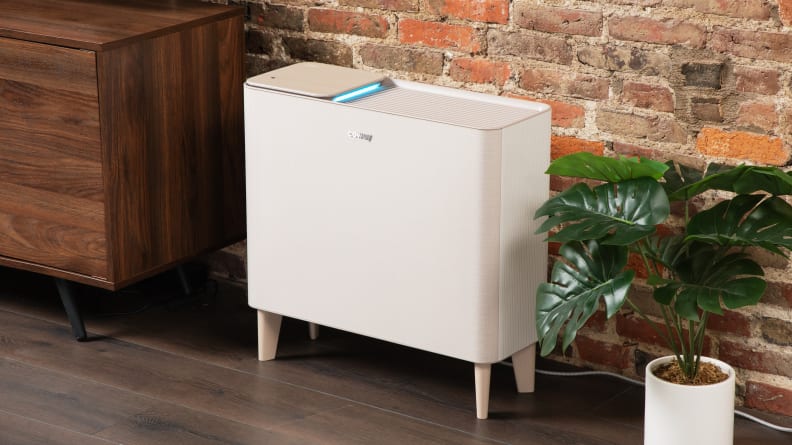
Credit: Reviewed / Timothy Renzi

With a fresh design that doesn't scream "I'm an air purifier," the Coway Airmega Icon won't look so out of place in your living room.
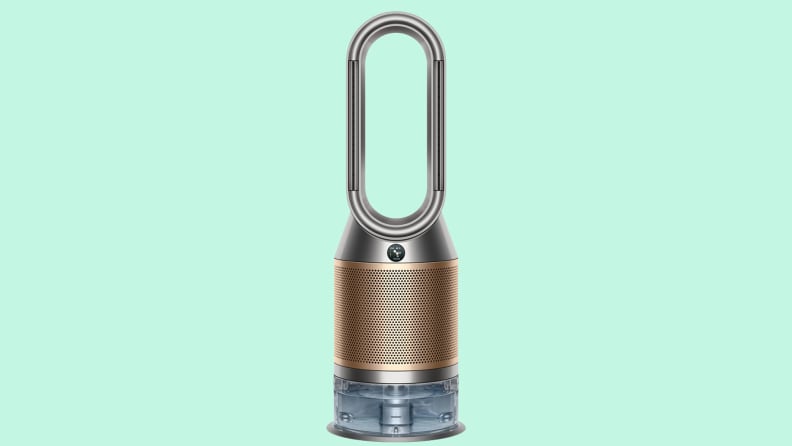
Credit: Reviewed / Dyson
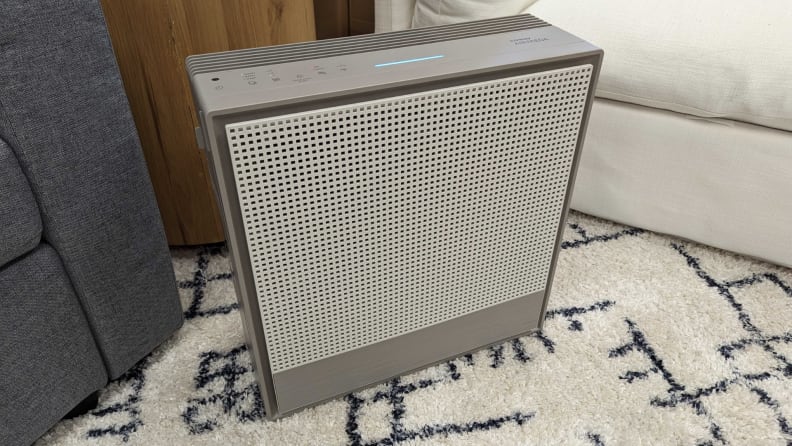
Credit: Reviewed / David Ellerby
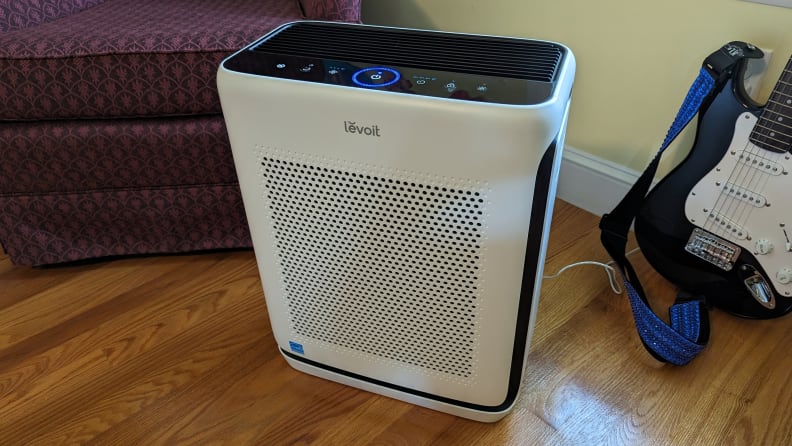
Credit: Reviewed / Dave Ellerby

Made for bedrooms, the Vital 200S monitors sunlight and goes quiet at night, to keep from interfering with your sleep.
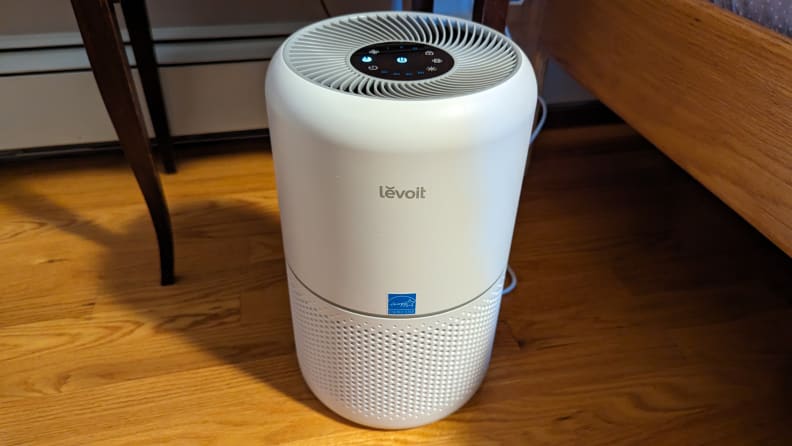
Credit: Reviewed / David Ellerby
A lack of air quality sensors is a trade-off for the inexpensive cost of the filter.
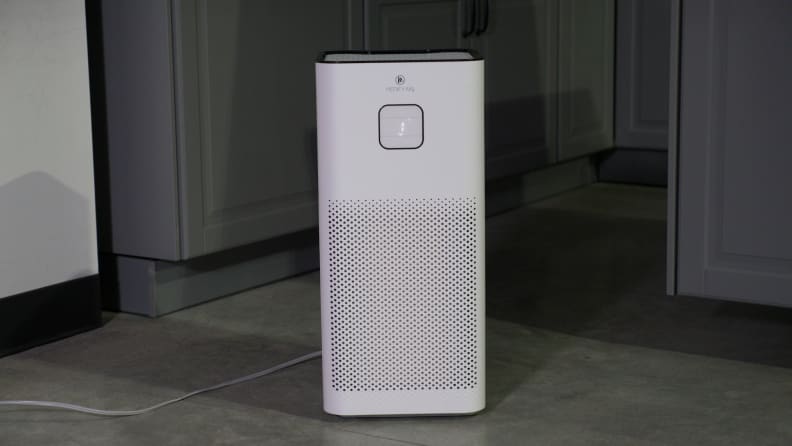
Credit: Reviewed / David Ellerby
The Medify's filters are rated HEPA 13, a high-efficiency type often used in medical facilities that are effective at removing the aerosols that spread SARS-CoV-2, the virus that causes COVID.
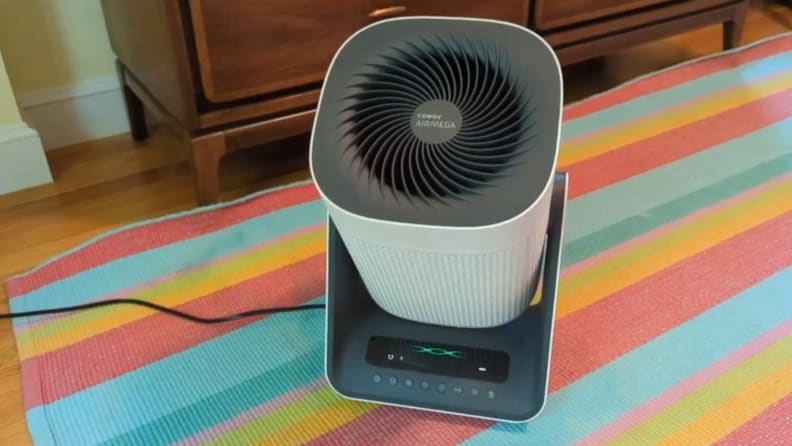
Credit: Reviewed / David Ellerby
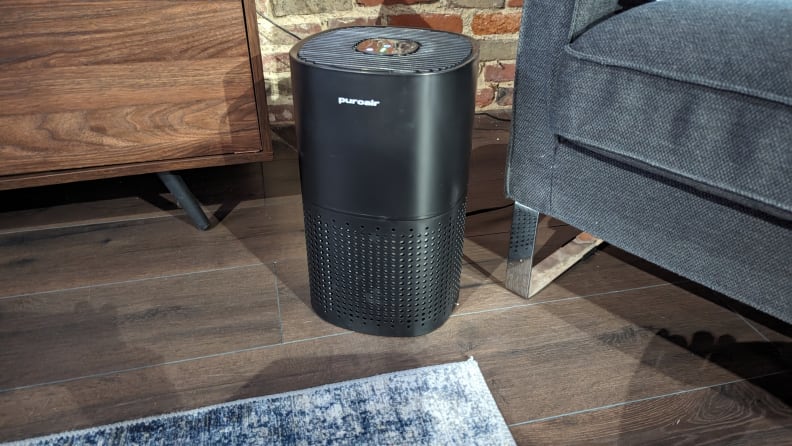
Credit: Reviewed / David Ellerby
The Puro Air 240 air purifier offers excellent filtration based on its HEPA 14 filter. Bonus: It's affordable!
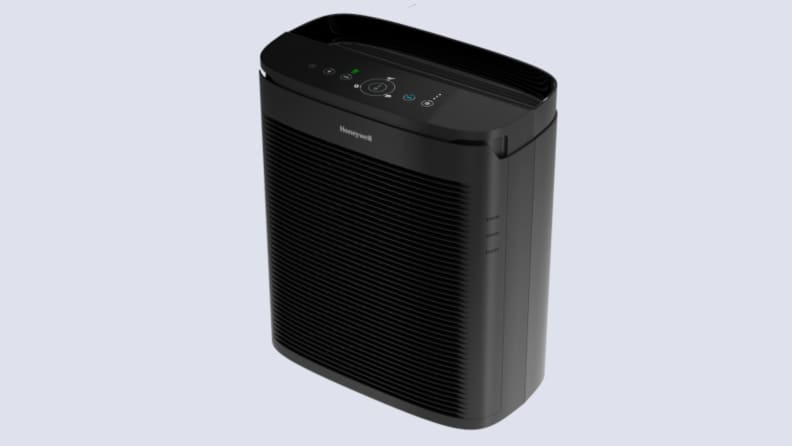
Credit: Reviewed / Honeywell
How We Tested Air Purifiers
The Tester
Hi, I'm Dave Ellerby, chief scientist in the Reviewed labs. I got my Ph.D. from the University of Leeds in 2000 and my Bachelor of Science from the University of Manchester in 1997.
I oversee our lab testing, develop tests for new products, and update tests to ensure accuracy and meaningfulness. Pollen allergies in the spring and the year-round aroma of two large Bernese Mountain dogs make me particularly interested in indoor air quality.
The Tests
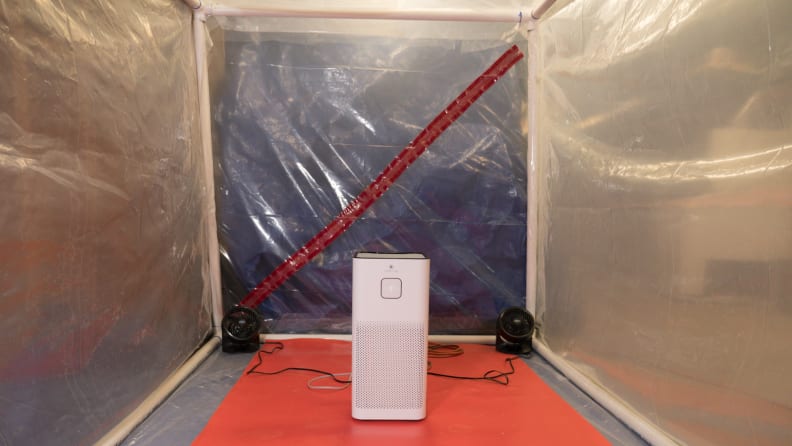
Credit: Reviewed / David Ellerby
We built an airtight chamber in our lab in order to measure how quickly each air purifier could remove particles and volatile organics compounds (VOCs) from the air.
In our lab, we tested how well air purifiers could remove dust, smoke, and VOCs from an enclosed space. They are also rated on noise and display light levels, ease of setup and use, their looks, and annual filter cost. The top-rated air purifiers made this list.
We tested how quickly the purifiers remove smoke particles and volatile organics compounds (VOCs) from an airtight chamber in our lab.
Each purifier is placed in the chamber and turned to its maximum fan setting. If extra filter mechanisms are available, we switch those on. We record changes in particle and VOC levels, measuring the air cleaning rate for each purifier.
For particles, we focus on those smaller than 10 microns, as they're small enough to make it into your lungs.
We assess how easy it is to set up the purifier and change the filter, noting how many settings and filter stages it has. We also determine the annual cost of replacing filters.
Finally, the air purifiers go home with the tester to see if fan noise and display lights affected sleeping, conversation, and TV viewing. This also allows us to see how they look in a domestic setting.
What You Should Know Before Buying an Air Purifier
Which is the best air purifier for you will depend on the size of your space, air quality concerns, and automation features.
When choosing an air purifier, focus on your main air quality concerns. If you suffer from allergies, are concerned about airborne viruses and bacteria, or encounter wildfire smoke, you need a particle filter. Particle filters don't remove chemicals, though. To tackle these, your air purifier will need an activated carbon filter or other chemical removal stage.
For the tiniest particulate matter, like smoke and virus-carrying aerosols, you need a high-efficiency particle (HEPA) filter.
How Do Air Purifiers Work?
We burnt incense near the Blueair Blue Pure 311i purifier to test whether it would sense the smoke and turn its fans on.
The heart of most air purifiers is a fan that pulls room air through the filters and returns filtered fresh air to the room.
All the air purifiers we tested had a particle filtering stage. Many had extra filter mechanisms to tackle chemical pollution, viruses, and bacteria.
Some purifiers include an air quality monitor that automatically adjusts fan speed to match the pollution levels in your home. This keeps down energy and filter use.
What is a HEPA Filter?
High-efficiency particulate air filters (HEPA filters) are rated by how efficiently they remove particles down to 0.3 microns.
HEPA filters have a number rating from H10 to H14; the higher, the better. H10 and H11 filters are sometimes described as "True HEPA," and H13 and H14 filters as "Medical Grade."
HEPA filters stop smoke. Even though many viruses and bacteria are smaller than 0.3 microns, they're spread in larger liquid droplets called aerosols. HEPA filters trap these and limit the spread of airborne bacteria and viruses, including COVID-19.
HEPA filters aren't just for tiny particles, they trap everything larger than 0.3 microns. So if you have allergies, HEPA will help out with larger particles like pollen, mold spores, and pet dander too. This means HEPA air purifiers are a perfect choice if you're concerned about any type of airborne particle.
Be careful in your choice, as some filter manufacturers use the terms "HEPA like" or "HEPA type." These are marketing terms that don't clearly define filter quality.
If you're investing in a HEPA filter, also look for a purifier with a prefilter. These trap larger items, like pet hair, before they get to your other filter stages. There's no point paying for a HEPA filter if it gets clogged with cat hair!
Room Size and Clean Air Delivery Rating (CADR rating)
Most air purifiers list a coverage area in square feet. For reference, a typical living room or master bedroom is in the 200 to 300 square foot range, while small rooms like bathrooms have considerably less square footage.
Get an air purifier that is the right size for your room. If it's too small or tucked behind other furniture, it won't filter the air effectively. If it's too large, you're paying for fan power and a filter area you don't need.
Some manufacturers also report CADR. As explained by the Environmental Protection Agency (EPA), this shows how efficiently the air purifier removes pollutants.
If available, the CADR is a more direct performance guide than recommended area coverage. Choose a CADR value that's about two-thirds of your room's square footage.
Removing Airborne Particles
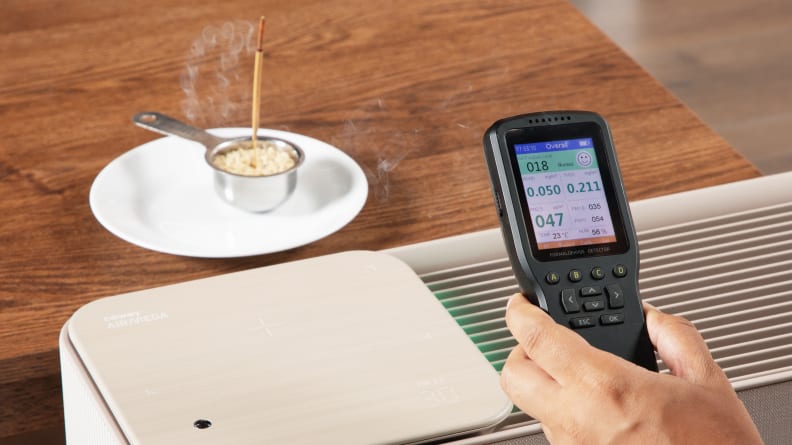
Credit: Reviewed / Timothy Renzi
We tested each air purifier's ability to handle smoke and other particles.
Airborne particles come in a range of sizes. Allergens like pollen and mold spores are relatively large at 10 to 100 microns. If you're allergic to these, you may not need the highest-performance filters.
Most other problem particles are much smaller. Pet dander and dust mite allergens are in the 10-micron and less range. Smoke and the aerosol droplets created when you cough and sneeze that spread bacteria and viruses are even smaller, at 1 micron or less.
Most hairs are about 70 microns thick, so you can't see most of the smaller particles. To stop smoke, bacteria, and viruses, get a HEPA filter.
Removing Chemical Air Pollution
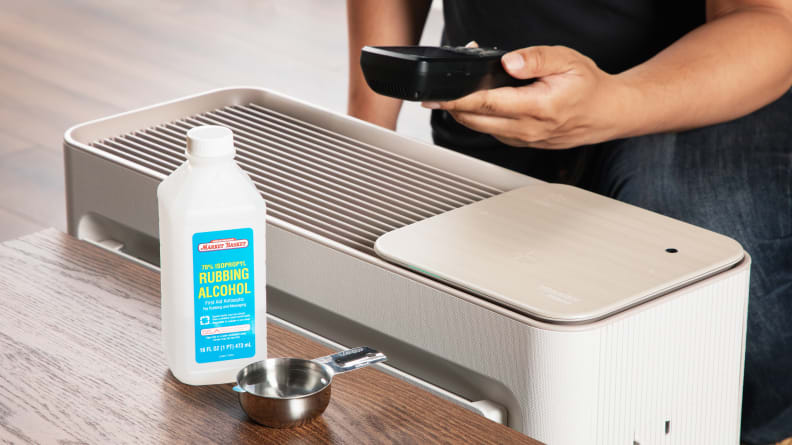
Credit: Reviewed / Timothy Renzi
Chemicals and VOCs can be major health concerns, we conducted lab tests to gather data on how each air purifier handled them.
Volatile organic compounds (VOCs) are major chemical pollutants released by paint, plastics, cleaning products, hair spray, and glue. Nitrogen dioxide comes from burning fossil fuels, and although traffic fumes are a major source, it can make its way into your home.
Nitrogen dioxide and some VOCs have negative health impacts.
Particle filters don't remove airborne chemicals. If you're worried about chemical pollutants, ensure your purifier has carbon filters or other mechanisms specifically designed to trap or neutralize them.
More Articles You May Enjoy


Comments
Post a Comment